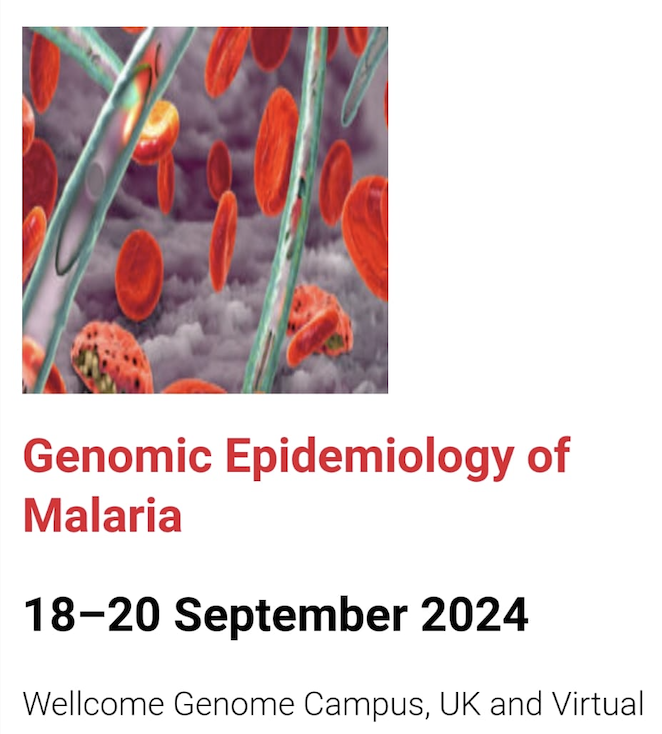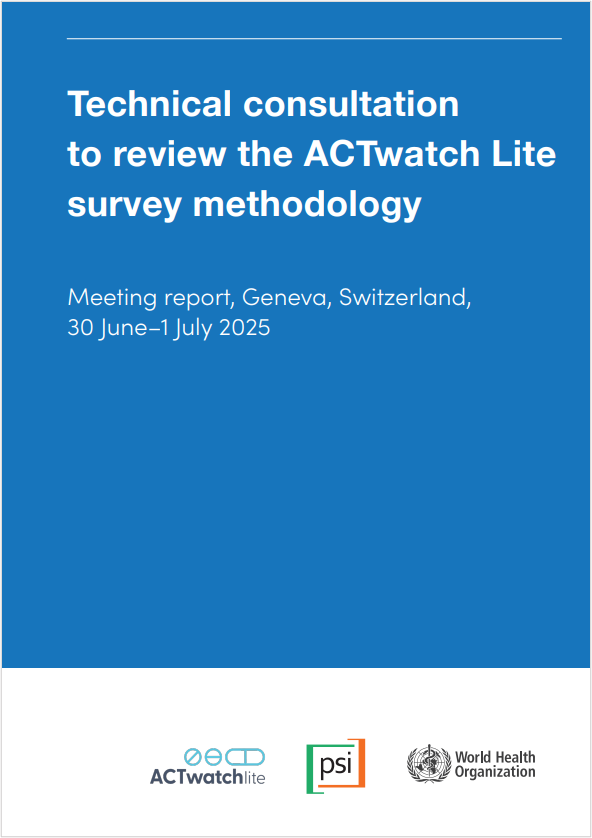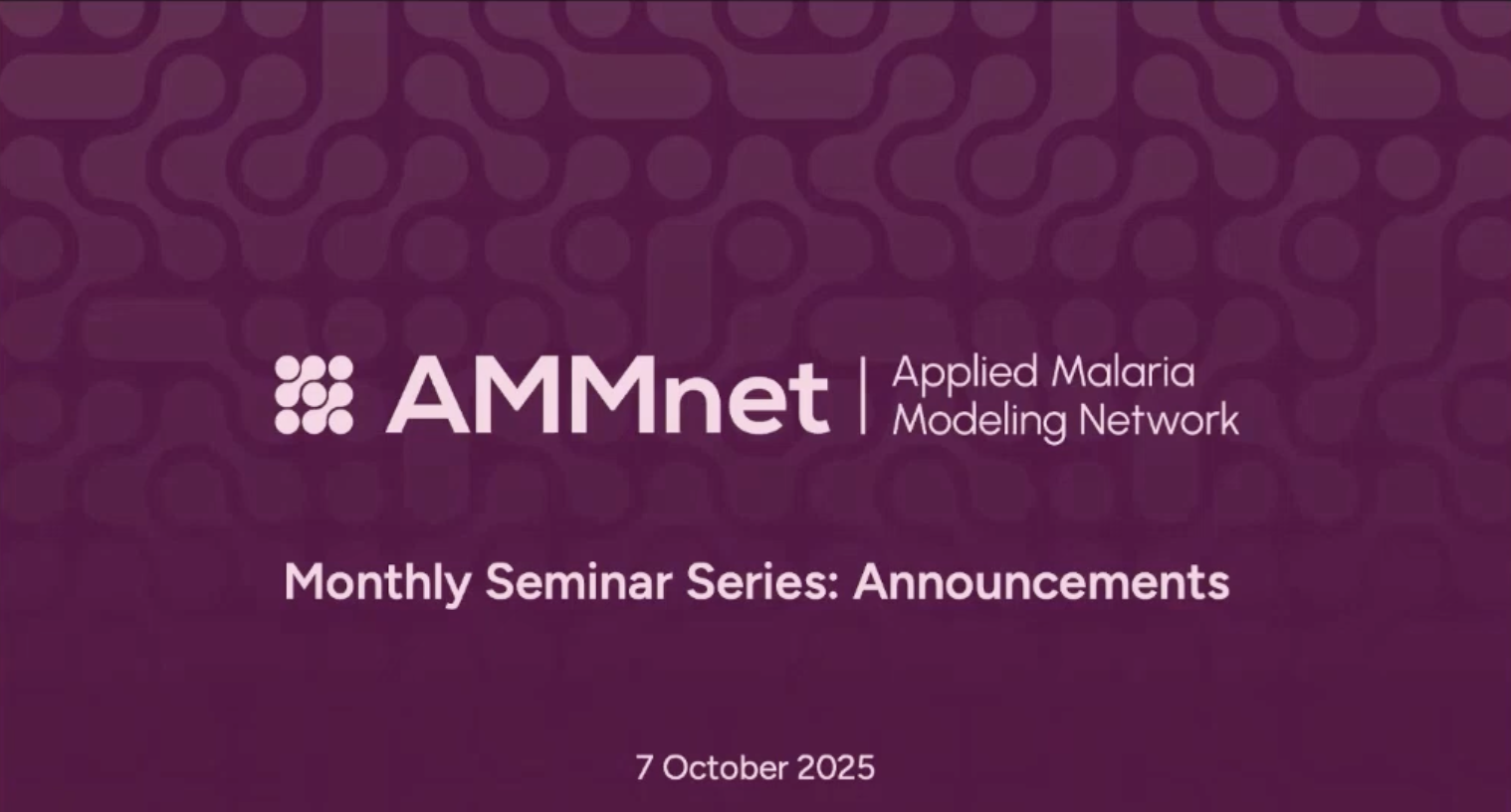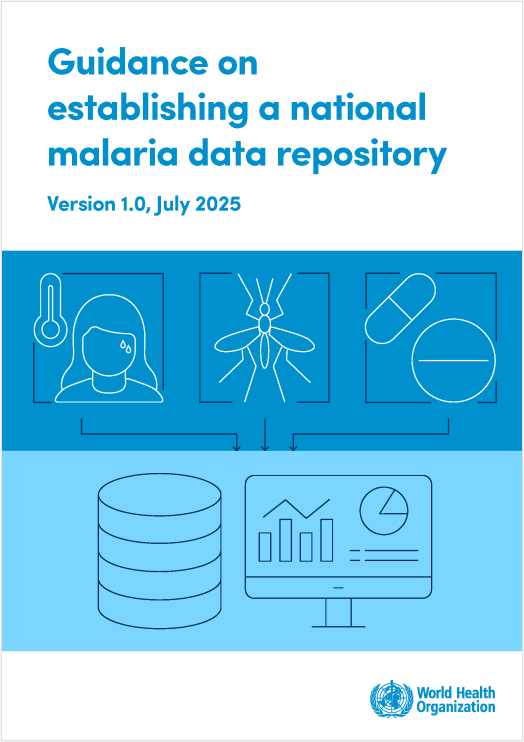9th Genomic Epidemiology of Malaria (GEM) Conference – 2024: Day 2
Thursday, 19th September 2024
Published: 20/09/2024
This report is brought to you by the MESA Correspondents Ambadiang Mae Marilene M., Emma Collins, Deborah Neumbe, Duru Vincent Chiagozie, Leen Vanheer, and Nkemngo Francis Nongley. Senior editorial support has been facilitated by Andrew Balmer, Chiyun Lee, Jacob Tennessen and Patricia Doumbe Belisse
THEMES: THEMES: Basic Science | Epidemiology | Health Systems
MESA Correspondents bring you cutting-edge coverage from the GEM 2024 Conference “A forum for understanding the clinical and biological consequences of genome variation in malaria parasites, their vectors and human hosts”.
Session 3: Genomic studies of species interactions
Megan Michel (Max Planck, Germany) presented an exploration of the history of human malaria using ancient DNA. Michel’s research aimed to use ancient DNA to understand how these parasites spread and evolved. Archives of infectious diseases consist of textual sources, osteological data, or ancient DNA from human bones and teeth. Ancient DNA data for malaria has so far been limited, as ancient DNA is often damaged and highly fragmented, and pathogen DNA typically represents a very small percentage of the total DNA extracted from bone or teeth samples. However, methodological advancements, such as hybridization capture, have increased the percentage of ancient microbial DNA in samples, making it possible to reconstruct genome-wide data from pathogens preserved in ancient human skeletal remains. Michel highlighted that they identified 38 ancient individuals from around the world with evidence of malaria infection. They used hybridization capture to enrich Plasmodium DNA, which was successfully sequenced from 36 individuals. These ancient parasite genomes can shed light on disease histories. For example, an ancient Plasmodium vivax genome from Peru clusters with modern Latin American P. vivax populations in a PCA, as well as with Ancient European strains. Taken together, her results suggest that vivax was likely spread by European colonizers to the Americas. In contrast, for P. falciparum, ancient European strains are quite different from clusters of ancient American strains, suggesting that P. falciparum may have been transmitted during the trans-Atlantic slave trade. Michel concluded by explaining two more examples, using ancient parasite DNA from a cemetery in Belgium and an ancient individual from the Himalayas, to draw insights into how human mobility and trade in ancient history facilitated interactions between human and parasite populations.
Lucas Amenga-Etego (West African Centre for Cell Biology of Infectious Pathogens, Ghana) presented his work on malaria drug resistance in Ghana. The study outlined how Ghana’s malaria burden is decreasing, although it remains a public health issue, and prevalence is heterogeneous across the country. Additionally, although the dominant parasite is Plasmodium falciparum, P. malariae and P. ovale are also circulating. He is working with the National Malaria Elimination Programme (NMEP) to implement genomic surveillance of malaria to support evidence-based decision making. His team have collected over 7,000 positive malaria dried blood spots and sequenced around 1,000 of them. They identified that CQ resistance (CVIET) is under 2% and mainly found in the south. Investigating the Pfmdr1 mutations showed that the sensitive haplotype was prevalent, although there are some resistant haplotypes. Similarly, an examination of dhfr and dhps markers found few highly resistant parasites. There were seven dhps haplotypes, with the dominant haplotype being AGKAA (A437G). He revealed that they had not discovered Kelch13 mutations among their samples, although they identified low-frequency uncharacterised variants (Q613H, V637I, T387A). He also investigated the role of treatment with herbal compounds in the selective pressure for drug resistance. They identified 20 compounds that had been used to treat malaria. IC50 analysis identified six products that were effective, and testing against various 3D7 life stages indicated efficacy, particularly against trophozoites. Finally, whole genome sequence data showed that asymptomatic infections had a lower mean multiplicity of infection (fws) compared to symptom cases.
Paolo Bareng (Burnet Institute, Australia) presented on defining immune escape polymorphisms in P. vivax, using insights from the analysis of allelic turnover of 16 antigens in a longitudinal cohort of Papua New Guinean children. Bareng’s work aimed to use population genetics to guide malaria vaccine design by analyzing the genetic diversity of Pv antigen vaccine candidates and identifying immune escape polymorphisms in these candidates. A multiplexed long-read amplicon sequencing assay was performed to amplify and sequence the target genes in 603 isolates obtained from a longitudinal cohort study in Papua New Guinea. The findings identified several polymorphisms in the target genes that were strongly associated with symptomatic malaria. For Ama-1, a blood-stage antigen, these polymorphisms were found within domains under strong balancing selection pressure, close to essential binding sites for erythrocyte invasion, further supporting their potential as targets of immune selection. Additionally, classifying these immune escape polymorphisms could help predict specific serotypes. When compared to a global database of P. vivax gene sequences, the study revealed a low prevalence of Sal-1 variants used in current vaccine formulations, alongside the widespread presence of non-vaccine strains. This highlights the potential challenges for vaccine efficacy across diverse populations.
Gavin Band (Oxford University, United Kingdom) shared his work on the geographical analysis of P. falciparum sickle haemoglobin association gene (Pfsa) at local and continental scales. Their study investigated the Pfsa mutations found in three regions (Pfsa1 and Pfsa2 in two regions of chromosome 2 and Pfsa3 on chromosome 11) of the P. falciparum genome, which are speculated to overcome the protective advantage of sickle cell carriers (HbS). Band observed that 45 out of 49 patients with severe P. falciparum infections and Hbs genotypes had parasites carrying the Pfsa alleles, implying that these parasites are able to overcome the protective effects of sickle haemoglobin (Hbs). Furthermore, their work also showed that the Pfsa + parasites are able to infect people who do not have the sickle allele. Geospatial analysis and spatial simulations were carried out using data gathered from both Hbs and parasite information collected from global populations. The correlation between the Pfsa allele and sickle haemoglobin (HbAS or SS) was positive in Mali, Gambia, Senegal, Ghana, and Tanzania while in the DRC, there was a negative correlation. The Pfsa2 allele was absent in West Africa but present in East Africa with a positive correlation, while the Pfsa4 allele, not present in East Africa, had a positive relationship in West Africa. To achieve the same intermediate frequencies of the Pfsa alleles as observed in field data, the simulation required a fitness cost to be added to the mutation. This indicates that the Pfsa allele confers a selective advantage to the parasite by overcoming Hbs protection, however a potential fitness cost is preventing it from becoming fixed in the population.
Antoine Claessens (University of Montpellier, France) presented the var gene expression switching rate in chronic Plasmodium falciparum infections. His study explores how Plasmodium falciparum evades the immune system to maintain chronic asymptomatic infections. Regular blood samples from the same host were collected in the Gambia to characterize host-pathogen interaction at a population level, the individual level, and the molecular level. Patterns of var gene expression were investigated in 26 P. falciparum-infected individuals during the wet season and in 16 chronically infected individuals with 6 monthly blood samples. Var gene transcription was analyzed using RNA sequencing and amplicon sequencing of the DBLalpha domain of var genes. Alongside this, parasites were cultured in vitro, and PacBio long-read sequencing was used to retrieve the full-length var genes. His findings highlight that the entropy index, which measures the diversity of var gene expression within an isolate, was significantly lower in chronic infections in the dry season, compared to more recent infections in the wet season. Findings from the longitudinal data showed different var gene transcription patterns from month to month, indicating a high turnover rate. Surprisingly, some var genes were found to express at least twice during a chronic infection, indicating recurrent var genes.
Sophie Berube and Christine Markwalter (University of Florida, United States) talked about investigating the effect of mosquito biting behaviour on infectious reservoirs of malaria. This study was done utilising two methodologies: a longitudinal cohort study along with a transmission model. The longitudinal study was carried out in Kenya within 75 households across 5 villages. Indoor resting mosquito and blood spots of participants from households were collected. Plasmodium falciparum infection was detected by PCR along with human short tandem repeats (STR) to allow human to mosquito to human bite matching. Out of the 3000 female Anopheles mosquitoes collected, 662 mosquitoes’ blood meals were matched to participants in the study. Among the matched bloodmeals about 22% were positive for P. falciparum sporozoites and about 17% of the matched blood meals were multi sourced. The data reveals that P. falciparum within mosquitoes had a higher multiplicity of infection (MOI) than the parasites in humans. It was also revealed that mosquito infection with Pf sporozoites increased the likelihood three-fold of biting infected hosts; the authors speculate that the sporozoite infection may be altering the mosquitoes’ biting behaviour. This work was followed up with a transmission model which indicated that you require both heterogeneity in mosquito biting choice and heterogeneity in human attractiveness preference to reflect the same differences in MOI that were observed in the cohort longitudinal study with higher MOI in mosquitoes than humans.
Session 4: Harmonising data standards and analysis resources for public health
Aimee Taylor (Pasteur Institute, France) presented research on how reinfections can downwardly bias treatment efficacy estimates and interfere with drug resistance monitoring in malaria-endemic settings, as reinfection can be mistaken for recrudescence. She further explained that in order to classify a recurrent parasitic infection as a reinfection rather than recrudescence, genetic data must show that the parasite in the recurrent infection is distinct from the original strain. However, this distinction can be complicated by factors such as polyclonal infections, where genetically diverse strains coexist within the same host, and biological challenges like persistent gametocytes or multiple blood meals from different sources within households. Various molecular techniques and analytical methods are available to differentiate between recrudescence and reinfection. The case of Plasmodium vivax presents even greater complexity due to the potential for relapses caused by dormant liver hypnozoites. These relapses represent delayed activation of parasites from earlier infections, and the parasites may have complex relationships to each other, being clonal, related (siblings), or genetically distinct (strangers). Taylor then introduced the R package, Pv3Rs, developed in her lab, which aims to identify patterns in allelic data compatible with different P. vivax recurrent states, visualize data and outputs, and more accurately infer whether P. vivax recurrences are relapses, recrudescence, or reinfections using genetic data. It uses a Bayesian model to compute the probable cause of recurrences. She concluded by outlining plans for further enhancements, noting that the current version of Pv3Rs is still under development.
Session 5: Transmission and genetic surveillance of malaria: new methods, analyses and resources
Bokretsion Gidey Brhane (Ethiopian Public Health Institute, Ethiopia) explained that Ethiopia aims to eliminate local malaria transmission by 2030, despite a recent resurgence in malaria cases due to multiple factors, including the emergence of partial resistance to artemisinin. Genomic surveillance is therefore essential to monitor the evolution of resistance markers. Dried blood spots were collected from febrile outpatients aged ≥1 year with microscopically confirmed Plasmodium falciparum malaria at 12 sentinel sites across 5 regions between 2019 and 2022. Molecular inversion probe sequencing targeted mutations associated with artemisinin and partner drug resistance, including the k13, mdr1, crt, dhfr, and dhps genes, along with genome-wide markers to assess the complexity of infection and parasite relatedness. The study revealed monogenetic infections and a regionally variable high prevalence (15.7%, range 0-58.8%) of the WHO-validated k13 R622I mutation. Importantly, the validated k13 A675V mutation was detected for the first time in Ethiopia (4.5%), alongside several partner drug resistance markers, including mutations in mdr1, dhps, dhfr, and crt, which were nearly fixed across the country. This highlights the need for therapeutic efficacy trials to detect early failure of artemisinin-based combination therapies.
Shahiid Kiyaga (Makerere University, Uganda) presented on the genomic advances in understanding the genetic diversity and transmission intensity of P. falciparum in Uganda. They analysed 2,245 dried blood spot samples collected from symptomatic malaria cases between January and March 2023 across Uganda. Malaria prevalence varied widely, ranging from 6.0% to 57.4% depending on the location. Infected samples were subjected to multiplex amplicon sequencing to examine the haplotypes, estimate the complexity of infection (COI), and assess clonal relatedness. Data revealed a high level of genetic diversity within the parasite population in Uganda, with a mean COI of 3.88. Furthermore, the genomic metrics of parasite diversity at the health facility level were found to correlate with malaria prevalence, suggesting that genomic data could play a crucial role in improving the stratification of regions by transmission intensity.
William Hamilton (Wellcome Sanger Institute, United Kingdom) presented recent progress on using nanopore sequencing for P. falciparum surveillance, and discussed the significant ‘implementation gap’ in scaling this tool from research to clinical diagnostic applications. In his study, Hamilton showcased ongoing efforts to develop a P. falciparum nanopore assay that could be used in both clinical and public health settings. Following initial implementation in Ghana, the study has (i) expanded the amplicon panel to include additional drug resistance markers, polymorphic surface antigens, and Plasmodium species detection, (ii) designed a set of commercial plasmid inserts that serve as cost-effective positive controls, with both ‘test’ and ‘control’ single nucleotide polymorphisms (SNPs) engineered to assess assay performance, (iii) established robust systems for assay quality control, based on differences in amplicon coverage between positive and negative controls across a range of parasitaemia and sample types, and (iv) developed training resources for use in endemic settings, including Cameroon.
Edwin Sutanto (Exeins Health Initiative, Indonesia) highlighted the challenges that polyclonal infections pose to the study of Plasmodium vivax biology and epidemiology. Nearly one-third of the isolates in the MalariaGEN Pv4 dataset are polyclonal infections, which are traditionally excluded from the analysis to avoid confounding molecular epidemiology results. Sutanto introduced DEploid, a software optimized for Plasmodium vivax, to deconvolve the genomes of over 300 polyclonal infections from Africa, the Asia-Pacific, and South America. Originally developed for Plasmodium falciparum, the software required modifications to address the unique challenges of Plasmodium vivax, such as low parasitemia and limited genomic read depth.
Myo Naung (Burnet Institute, Australia) presented his research on predicting antigen serotypes. Naung emphasized that malaria eradication will likely require vaccines to achieve elimination, but designing effective vaccines has been challenging due to the diversity of antigens and the possibility of breakthrough infections. To address this, Naung developed a model that accounts for genetic diversity and other antigen properties, including epitope mapping, to predict immune escape. Using around 500 samples as inputs, the model hypothesized that Single Nucleotide Polymorphism (SNPs) with high turnover rates, often linked to asymptomatic infections, are associated with immune escape. The Ama1 and csp genes were used as positive controls. The model identified several SNPs that may be markers of immune escape, most commonly found in merozoite genes. This study emphasized the importance of evaluating the qualities highlighted by the model when selecting new vaccine candidates.
Olivo Miotto (Mahidol Oxford Tropical Medicine Research Unit, Thailand) reported the discovery of a rare Plasmodium falciparum cryptotype, named AF1, which circulates at low frequencies across Africa. Using data from 4,376 clonal African parasite genomes in the Pf7 MalariGEN dataset, Miotto identified this cluster through principal component analysis, where it comprised about 1.2% of samples from 13 African countries. Further analysis revealed that AF1 parasites had highly correlated variants across seven chromosomes, indicating a common ancestry with high identity-by-descent (IBD) within the cluster. Miotto hypothesized that, since several of the genes containing these mutations are involved in red blood cell invasion and egress, AF1 parasites may be adapted to an evolutionary niche, potentially linked to host erythrocyte interactions.
Ashley Osborne (Menzies School of Health Research, Australia) presented an overview of Ethiopia’s unique and structurally divergent Plasmodium falciparum populations using genomics. The study used whole genome sequencing (WGS) data from two trials evaluating treatment measures for P. vivax in Ethiopia, conducted in 2017 and 2021. A total of 116 high-quality WGS samples from 98 isolates were analyzed. Osborne’s study revealed high IBD connectivity between parasites collected in 2017 and 2021, indicating a strong genetic link The study also showed a high prevalence of drug resistance biomarkers (pfDHFR and pfDHPS), which are associated with reduced susceptibility to sulfadoxine-pyrimethamine. The R622l Kelch13 variant was absent in the population. They finally found that the P.falciparum population in Ethiopia is genetically distinct from other sub-Saharan African populations.
Varanya Wasakul (Mahidol Oxford Tropical Medicine Research Unit, Thailand) presented her work exploring the use of pregnant women attending antenatal care (ANC) services as a sentinel population for malaria genomic surveillance in the Democratic Republic of Congo (DRC). Given the challenges and costs of setting up genomic surveillance in high-burden countries, especially among children, the study aimed to determine if pregnant women could serve as a more feasible sentinel group. Wasakul sampled over 4,000 pregnant women and 2,794 children in Kinshasa and used an amplicon sequencing platform to compare the Plasmodium falciparum genomes and drug-resistance markers. The findings revealed a malaria prevalence of 19% among pregnant women mostly asymptomatic and 49% among children (6-14 years) predominantly symptomatic. The study showed similar allele frequencies in both cohorts, with no significant differences in drug resistance mutations, including sulphadoxine-pyrimethamine-resistant haplotypes or kelch13 mutations. The complexity of infection was also comparable. The study concluded that integrating genomic surveillance into routine ANC activities is feasible, cost-effective, and beneficial for improving malaria surveillance and treatment for pregnant women in the DRC.
Annie Forster (University of Oxford, United Kingdom) focused her talk on Plasmodium falciparum sickle-associated loci across global parasite populations. She highlighted that malaria parasites have evolved to better infect individuals carrying the sickle cell allele (HbS). Plasmodium falciparum sickle associated (Pfsa) are regions in the malaria parasite genome found to be strongly associated with the human HbS polymorphism, that help the parasite overcome the protective effect of HbS. There are four Pfsa regions, however, this study specifically looked at Pfsa3 which was observed to have structural variants in its locus. Forster’s study aimed to catalogue structural variants present and assess them in global populations, to determine whether HbS-associated alleles are linked to structural variants, and how these structures might affect gene expression. Forster’s analysis revealed 11 different structural haplotype forms at this locus, including both gene deletions and duplications. The presence of these structural variants varied across Africa and some were more common in certain populations. The duplications were found to be closely associated with Pfsa3+ alleles, suggesting that the structures, rather than nucleotide variation, may underlie the region’s association with sickle cell disease.
Petra Korlevic (Wellcome Sanger Institute, United Kingdom) shared insights on population genomics in the African malaria vector Anopheles funestus over the past century. Samples were obtained from 10 partner institutions and the general population structure was examined. Principal component analysis (PCA) was conducted on 656 samples. Principal component 1 (PC1) showed an approximate geographical distribution from south to southeast, equatorial, and north. Several samples were found to be distributed approximately 4000 km around the equator. When 45 historic Anopheles funestus samples were sequenced and added to the current data set, they observed that the PCA was similar to that of the present-day counterparts implying there has been no major change in the past years. Furthermore, signals of selection for the resistance to dieldrin (GABA gene) were evaluated and a haplotype tree was constructed using current data showing a high frequency of the A296S mutation in samples from Ghana, Ashanti, and Nigeria while a few historic samples also had the same mutation. Finally, the A296S mutation commonly found in the Anopheles gambiae complex was also found in Anopheles funestus.
Luisa D. P. Rona (Federal University of Santa Catarina, Brazil) presented her research on the diversity of Anopheles species within the Brazilian Atlantic Forest. Her study was driven by the hypothesis that Anopheles cruzii may represent a species complex rather than a single species. To explore this, fixation index (Fst) analysis was conducted on various genes across the chromosomes to assess genetic differences among mosquito populations collected from distinct regions of the country, particularly those inhabiting environments at varying altitudes. She reported that the geographical distances between these populations did not account for the observed levels of genetic differentiation. Further analysis through phylogenetic tree construction revealed that Anopheles cruzii comprises five distinct subgroups, with the most significant genetic differentiation occurring on the X chromosome.
Published: 20/09/2024
This report is brought to you by the MESA Correspondents Ambadiang Mae Marilene M., Emma Collins, Deborah Neumbe, Duru Vincent Chiagozie, Leen Vanheer, and Nkemngo Francis Nongley. Senior editorial support has been facilitated by Andrew Balmer, Chiyun Lee, Jacob Tennessen and Patricia Doumbe Belisse
THEMES: Basic Science | Epidemiology | Health Systems



